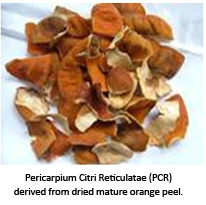China is native to economically important tropical and subtropical fruits such as litchi (Litchi chinensis Sonn.) and longan (Dimocarpus longan Lour.). The country is also home to various citrus varieties and currently has numerous citrus germplasm resources.
Litchi and Longan
 With numerous developments in Chinese agriculture, the litchi and longan industries have grown to a point where China leads globally in terms of cultivated area and production. The plentiful harvest not only fulfils local demand, but produces a substantial glut. With an abundant amount of fruit remaining unconsumed, the development of the processing industry is imperative.
With numerous developments in Chinese agriculture, the litchi and longan industries have grown to a point where China leads globally in terms of cultivated area and production. The plentiful harvest not only fulfils local demand, but produces a substantial glut. With an abundant amount of fruit remaining unconsumed, the development of the processing industry is imperative.
Both litchi and longan are used in traditional Chinese medicine for their purported healing properties. They are believed to have beneficial effects on the heart, spleen, and liver. Modern analysis shows that fruits are rich in minerals, dietary fibre, and phytochemicals.
However, there is a lack of efficient extraction technologies and evaluation systems to assess the effects of phytochemicals. There is also a lack of comparison of the differences in phytochemical content among cultivars. Moreover, there is still little knowledge about the relationship between active substances and antioxidant activity of different cultivars.
Researchers at the Guangdong Academy of Agricultural Sciences established a functional component database of different litchi cultivars, measuring the total antioxidant capacity, soluble protein, phenols, peroxidase (POD) and polyphenoloxidase (PPO) activity, and color stability.
It was found that phenolics and flavonoids exist in free form in the litchi pulp. Varieties Heiye and Huaizhi were found to have the highest phenolic, flavonoid, anthocyanin, and procyanidin content.
Citrus peels

Upon analysis, the essential oil was found to be rich in Terpenes. The six flavonoids found in PCR are hesperidin, pentamethoxyflavone, tetramethoxyflavone, nobiletin, tengertin, and hydroxymethoxyflavone. Researchers said that PCR’s antioxidant and antifungal properties can partially replace chemical and synthetic agents to avoid the toxicities and carcinogenic effects of chemical and synthetic agents.
Much like wine, it is also believed that the older PCR gets, the better it is. It was found that storage improves the production of essential oil and the yields of α-pinane, β-pinane and γ-terpinolene increases with the extension of the storage period.
PCR products available include candies, sugar, microcapsules of essential oils, flavonoids extracts, soluble beverages, and feeds.
Pummelo
 Huazhou pummelo (Citrus grandis ‘Tomentosa’) is unique to Huazhou, Guangdong, China and is used in traditional Chinese medicine. It is used to relieve cough and reduce flatulence. It was found that Huazhou pummelo is rich in amygdalin and narrigin.
Huazhou pummelo (Citrus grandis ‘Tomentosa’) is unique to Huazhou, Guangdong, China and is used in traditional Chinese medicine. It is used to relieve cough and reduce flatulence. It was found that Huazhou pummelo is rich in amygdalin and narrigin.
____________
This article is adapted from a presentation by Yi Ganjun, Institution of Fruit Tree Research, Guangdong Academy of Agricultural Sciences, at the International Symposium on Superfruits: Myth or Truth, Vietnam, 1-3 July 2013. All photos were derived from the powerpoint presentation.

